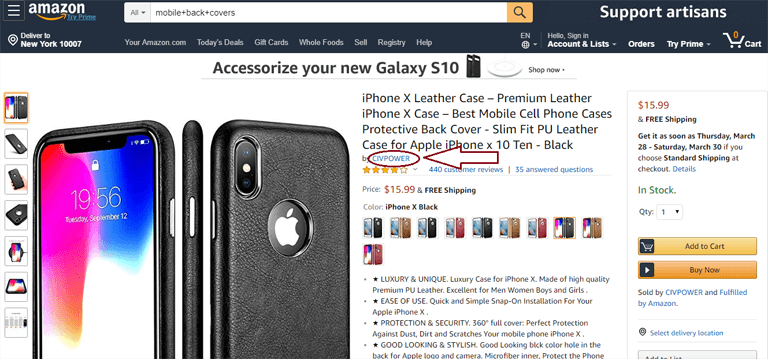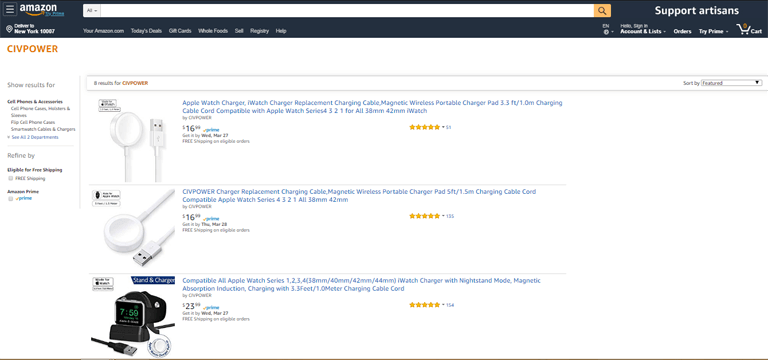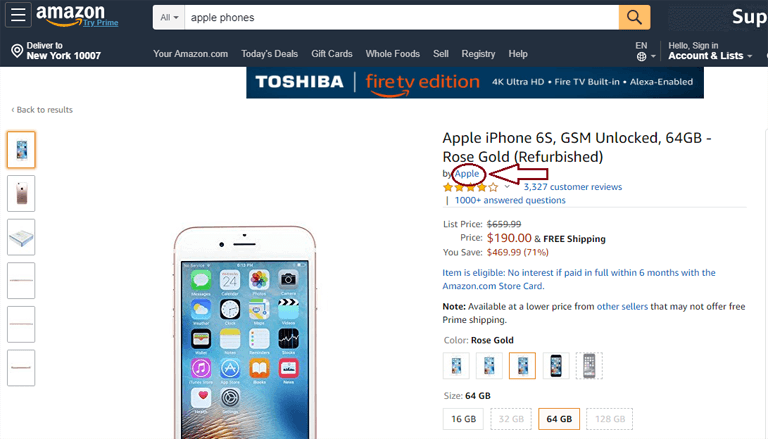
Amazon, the biggest eCommerce hub of all time, is being leveraged by millions of sellers to earn profits and a reputable position in the eCommerce market. And while most of them continue to simply list their products on Amazon, there are others who have been turning to Amazon storefront of late. And why won’t they?
This feature not only lets the sellers leverage Amazon’s wide customer base but also helps them in building a genuine brand identity. Moreover, having a storefront is great for medium and small-sized businesses that yearn for better visibility.
TIP: Before setting up an Amazon storefront, you must get your brand registered with the Brand Registry 2.0 along with an active registered trademark.
A storefront is not just limited to brand-building but goes on to protecting your brand. And what’s more? It helps in increasing your sales since all your brand listings are viewable in one place, giving your customers a more comprehensive view of what you have to offer.
Plus, a beautifully designed Amazon storefront gives your brand a professional look and feel. And if you do it right, it can easily attract valuable prospects to your store, thus increasing your conversions.

However, simply creating or setting up an Amazon storefront won’t do the trick. You’ll need to work around it to ensure that it does contribute to your profits in one way or the other. Start off by understanding the ins and outs of having an Amazon storefront and the reasons why you need to go for one if you’re all for seller success. Here are some:
1. Brand protection
Amazon storefronts can help in protecting your brand against duplicate or unauthorized listings.
To understand this, let us consider the following example:
Say, you’re looking for a back cover for your iPhone. When you find a suitable seller and open their listing, you notice the name of their brand beneath the listing’s title, as is marked below.

Now if you click on this brand name, it will take you to a results page in case the brand does not have a storefront built, which should look something like this:

This basically shows a collection of the products from this brand. Now, the problem with this is that this assortment can also display duplicate products that might be listed under your brand name. Also, you have zero control over the products appearing in this list. These may or may not be your original listings.
Now let’s consider another example, one of a brand with a storefront. Here’s a screenshot of an iPhone listing by Apple.

Since Apple has a well-designed storefront built, clicking on “Apple” will take you to their storefront page instead of a results page, and it will look something like this:

This one is a multi-page storefront. What’s great about having this type of storefront is that you’re in full control of the products that you want to display (unlike the list in the previous example). That said, when it comes to building a storefront, the process involves a few technical steps which are better left to the professionals who know how to set up an Amazon storefront.
2. Linkable to headline search ads

Your storefront is more like a centralized page that contains all your products. Directing more customers to this page will definitely prove to be beneficial for your conversions. And guess what? You can do so easily with the help of headline search ads. Paid search traffic can be directed to your storefront, just like a landing page. You can then direct customers to other pages of your storefront (if you have a multi-page store) and hence, build an even larger customer base.
3. Easy incorporation of rich media

Imagine an Amazon storefront for your brand with an intriguing design, including high-quality images and videos. The traffic will naturally skyrocket when your store’s landing page is attractive enough. Your storefront can include product videos depicting multi-angle views, detailed feature explanation, and a much clearer demonstration of your products. This will help the customers understand your product benefits better.
4. Access to Amazon analytics

Amazon merchants can even track the traffic they are receiving via a tool known as Amazon Analytics. This tool also lets you know about the referral traffic, i.e. from third party sources such as social media or advertising. Using this analysis, you can work on your store design and find out what really works for your customers.
5. Helpful during the holiday season

During the holiday season, online shoppers search through as many items and brands as possible before finalizing one. When you have a storefront, you get a better platform to showcase all your best products in one place. And since you can have a multi-page store, you can categorize your products to present your collection in an even more organized way. This proves to be quite helpful for your sales throughout the year, and especially during the holiday season.
Amazon is growing with each passing day and so is the seller count. A well-built Amazon storefront can help you cut through the noise. Also, you’ll be attracting many more prospects to your products, thereby fueling your conversions.
Thinking of setting up an Amazon storefront? You’ll need all the help you can get. The Amazon experts at Data4Amazon are well versed in all the technicalities involved and know what kind of design is likely to go down well with your brand image. Hire one by writing to us at info@data4amazon.com.

